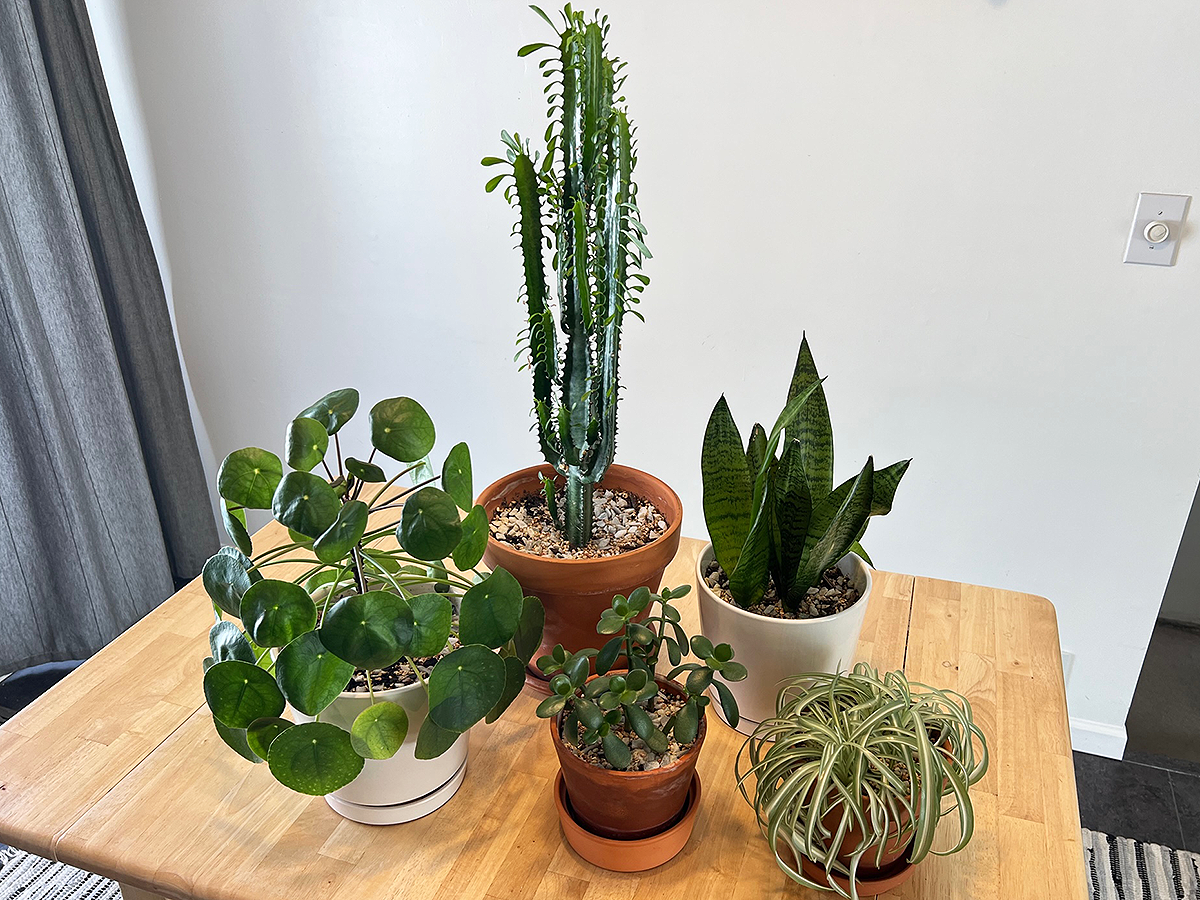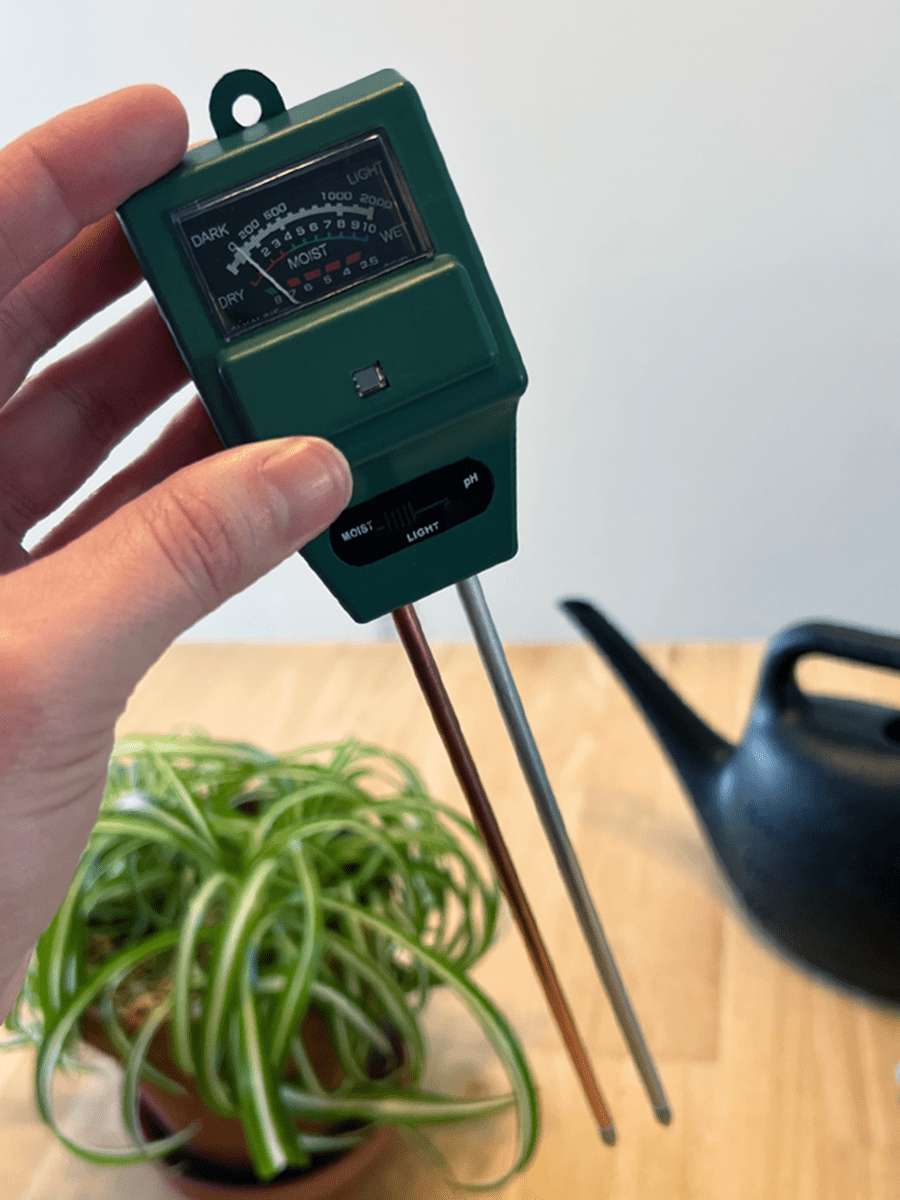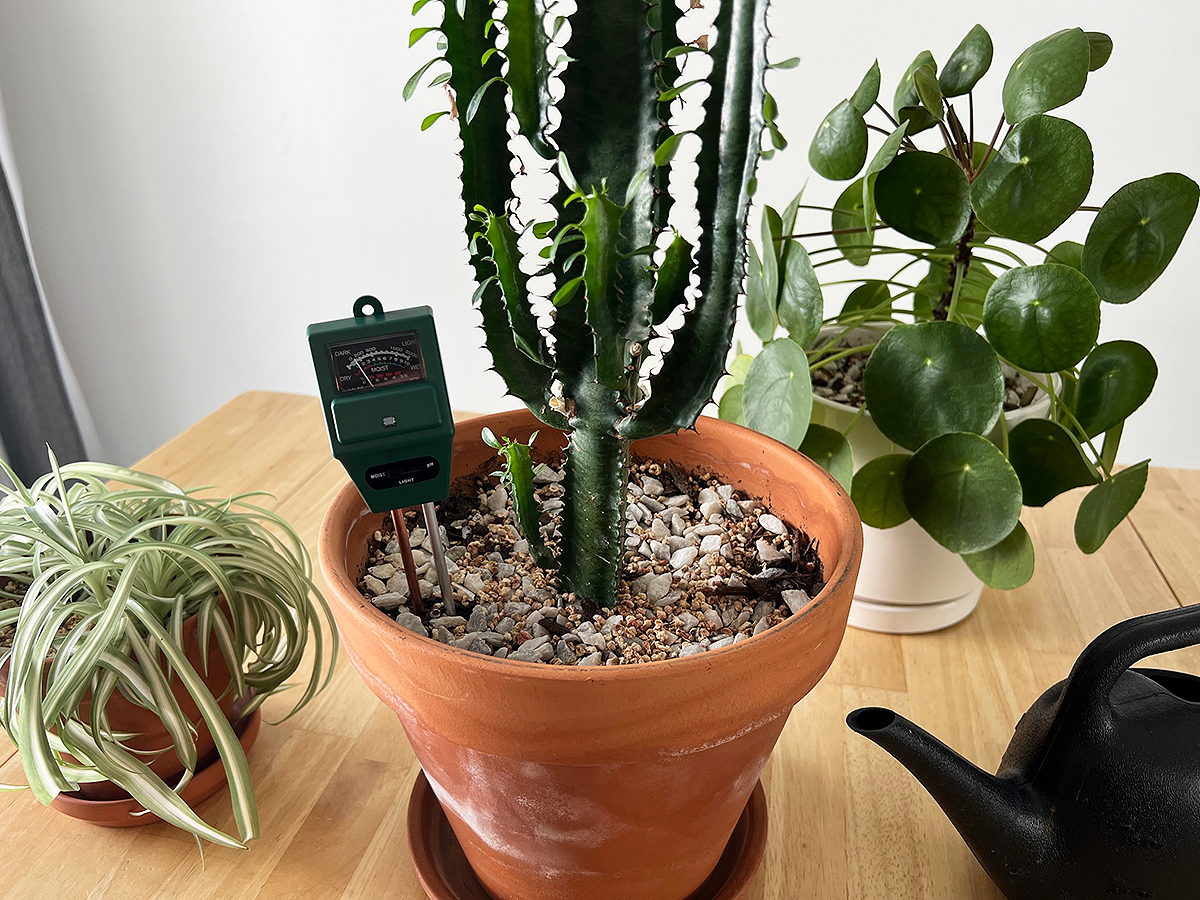

We may earn revenue from the products available on this page and participate in affiliate programs. Learn More ›
Tending to my indoor garden gives me a sense of purpose and pride. Like children and pets, my houseplants have names and personalities, each as unique as its care regimen. But plant parenthood hasn’t always evoked such joy for me. For many years my house was plantless because every pothos, kalanchoe, and cactus I brought through the door died. I couldn’t put my finger on the culprit at the time and eventually just accepted that said finger was a brown thumb.
As it turns out, there are a variety of reasons why my house—or any house, for that matter—is not so hospitable for plants. Water, soil, and light are drastically different between a plant’s natural outdoor environment and indoors. I’ve learned that it takes a little research, effort, and one very helpful tool to create ideal growing conditions inside a house.
The Plant Fixer
After my mom gifted me a beautiful candelabra cactus (her name is Aubrey, and don’t worry, she’s still alive), I was determined to fix my plant care problems. For starters, I learned the basic needs of an African milk tree: moderate water, bright, indirect light, and neutral soil. Sounds easy enough, right? Not for brown thumbs!
I needed a hand to ensure that I was fulfilling all of Aubrey’s needs, so I purchased this highly rated 3-in-1 soil meter at Amazon for $9.99. The device tests three elements that are vital for plant health: moisture, light, and pH. It’s non-electric, so there are no cords or batteries to mess with, and it’s small enough to store in a drawer for easy access come plant-tending time.

I’ll admit I rarely use the light test because, for the most part, I can see whether each of my plants is getting its recommended dose of light throughout the day. I’m happy to have the pH test available, but it’s not as useful for my indoor garden as it is for my outdoor vegetable plot. What has really made a difference in my plant care abilities is the moisture test.
Novices like myself often rely on a general weekly watering schedule for all plants in the house, but that can backfire—trust me. In my trials and errors I’ve learned that factors such as airflow and the type of planter you use can greatly affect how quickly soil dries out. For instance, if Aubrey were planted in a glazed ceramic pot instead of the porous terra-catta one she loves, her soil would take much longer to dry out between weekly waterings. That’s where the moisture test comes through in the clutch.
I now know that overwatering was the root (rot) of my plant care problems. I was relying on the calendar rather than the soil conditions to determine when to water. With my trusty meter, I can quickly gauge the moisture level inside each pot, and give my plants a drink only when they actually need it.
Get the Sonkir 3-in-1 Soil Moisture, Light, and pH Meter at Amazon for $9.99.

How to Test Soil Moisture With a Three Way Meter
Whether you have a standalone soil moisture meter or one that also tests pH and light, the method for measuring dampness is the same. The truth is, these devices don’t actually measure the amount of moisture in the soil but rather the amount of electrical current passing between two electrodes. Since water is more conductive than air, the probe will measure higher electrical currents in wet soil compared to dry. Here are the basic steps for using a soil moisture meter for plants:
- Wipe down the probes with a soft, dry cloth; then toggle the switch to the “Moist” position.
- Press the probes into the soil vertically, at least 6 inches deep. Be careful not to damage the plant’s roots; if you feel a lot of resistance, remove the probes and insert them in a new spot. Wait approximately 60 seconds. (For pH tests, wait 10 minutes.)
- Read and apply the results to your watering routine. Most of my houseplants require completely dry soil before they need another drink, which makes analyzing and acting on the results of my moisture tests simple. However, specimens that have more sensitive soil moisture needs may require additional research to align meter readings with the appropriate time to water.
- Clean the probes with a soft, dry cloth before storing the meter until you need it again.
Final Thoughts
Having a soil moisture meter has dramatically improved my plant care confidence. I’m no longer guessing when Aubrey and her now many siblings need to be watered—a crucial component to plant survival in my house. Instead, the science-y precision provided by this go-to gardening tool has turned my brown thumb green, and I would highly recommend it for all plant parents.
